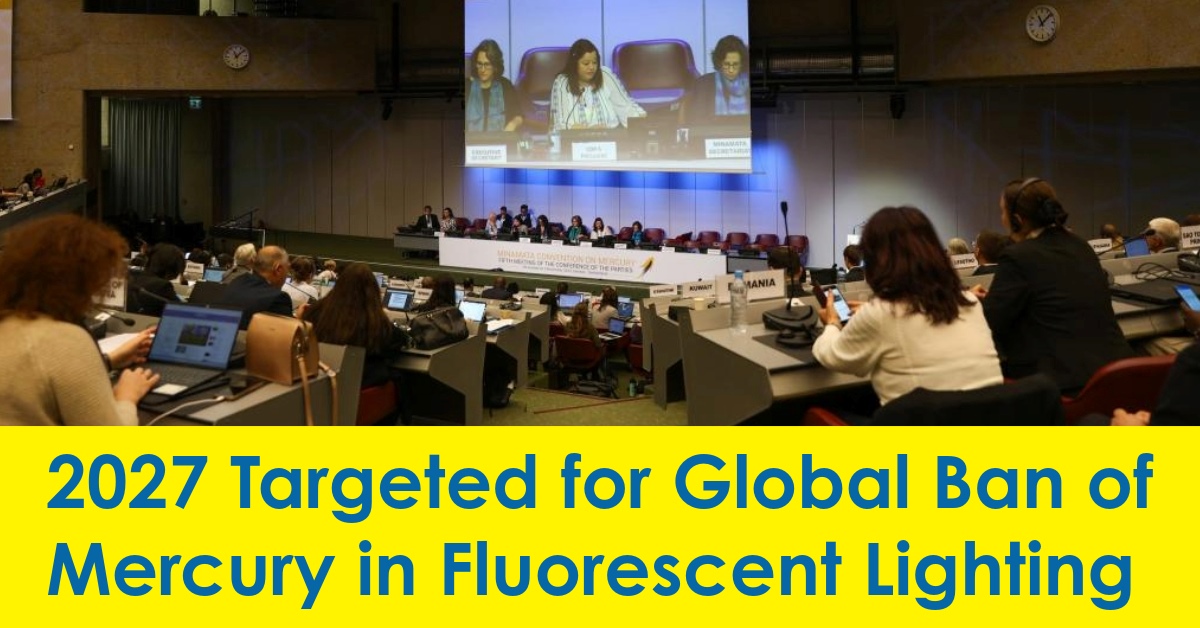November 20, 2023
2027 Targeted for Global Ban of Mercury in Fluorescent Lighting

Photo credit: Kiara Worth
Diverging from the original 2020 goal, countries now agree that 2027 is the right time
The recent Conference of the Parties (COP-5) to the Minamata Convention, held in Geneva earlier this month, brought forward important developments in the global effort to eliminate the use of mercury in various products, including lighting.
The convention has set a new target date of 2027 for the phase-out of mercury in fluorescent lighting products. The convention, attended by 147 countries and regions, originated from the tragic mercury poisoning incident in Minamata, Japan, in the 1950s. It aims to protect human health and the environment from mercury's harmful effects.
In 2013, members of the Minamata Convention committed to phasing out mercury in these products by 2020. However, in subsequent conventions there has been continued need to extend this deadline. Despite this, many global regions including the European Union and several U.S. states, including Vermont, California, Colorado, Hawaii, Rhode Island, and Maine, have already taken steps to ban fluorescent lighting products that contain mercury.
The members of the Minamata Convention agreed to ban the production and trade of fluorescent tubes by 2027. This decision stems from the health risks associated with mercury use in these products. Existing fluorescent lamps and stockpiled products can be used beyond this deadline. Unrelated to lighting, the convention also highlighted the failure to reach a consensus on the handling of dental amalgams and plans to continue discussions in 2025.
Claudia-Sorina Dumitru, president of the COP-5, expressed satisfaction with the convention's progress, emphasizing the importance of reducing human exposure to mercury. The Clean Lighting Coalition estimates that the new agreement will help reduce carbon emissions significantly, save billions on electric bills, and notably decrease mercury usage.
COP-5 also made advancements in other areas related to mercury pollution. Key decisions included phasing out mercury-added products like cosmetics, reinforcing ties with Indigenous Peoples, and setting a threshold for mercury waste. The convention's focus extended to integrated action on mercury reduction and biodiversity, reflecting its commitment to addressing chemical and waste-related challenges on a broad scale.
As the convention prepares for its next meeting in 2025 under the Chilean presidency, the global community seemingly remains committed to making mercury history, aiming for a healthier, safer planet.










